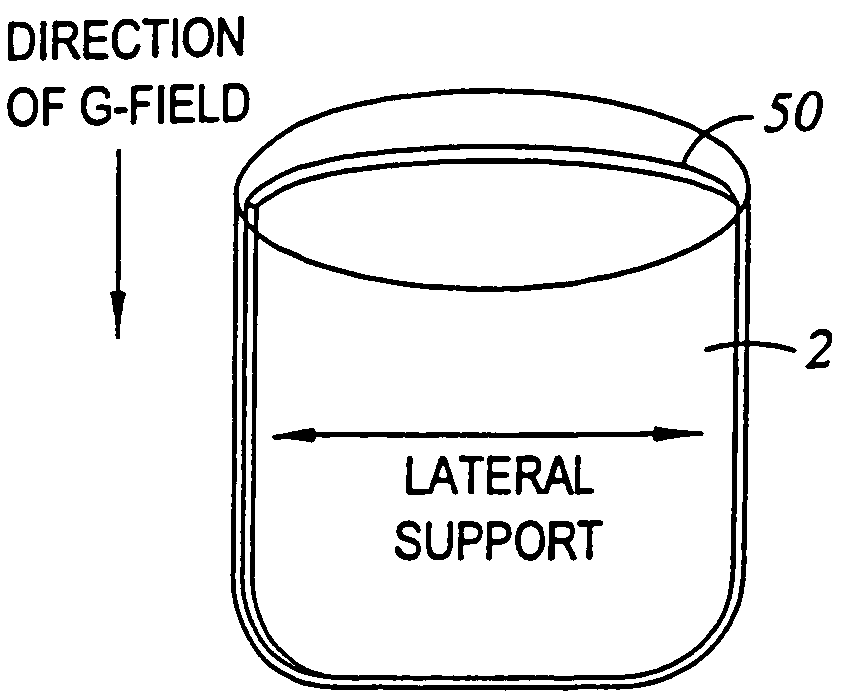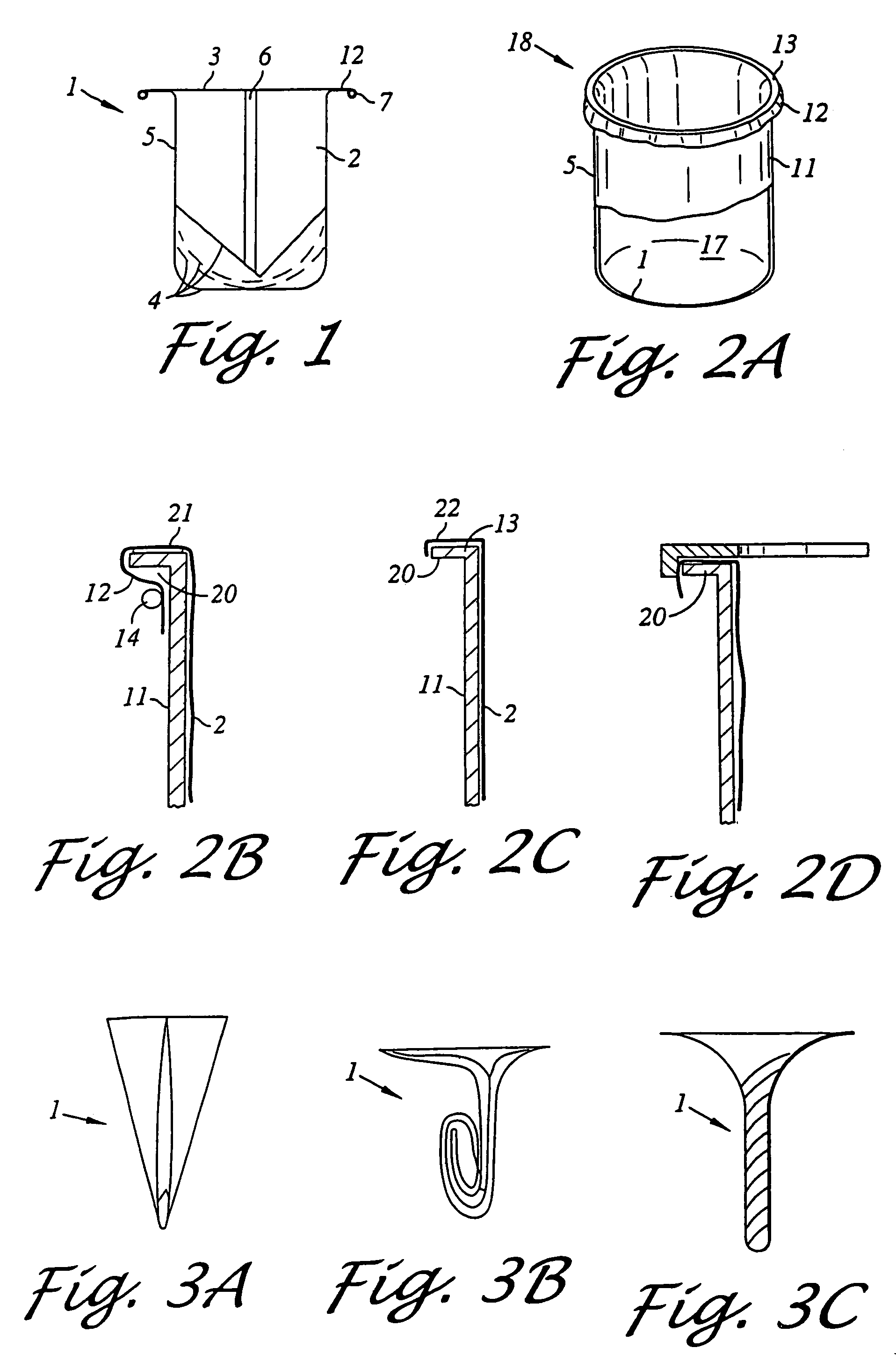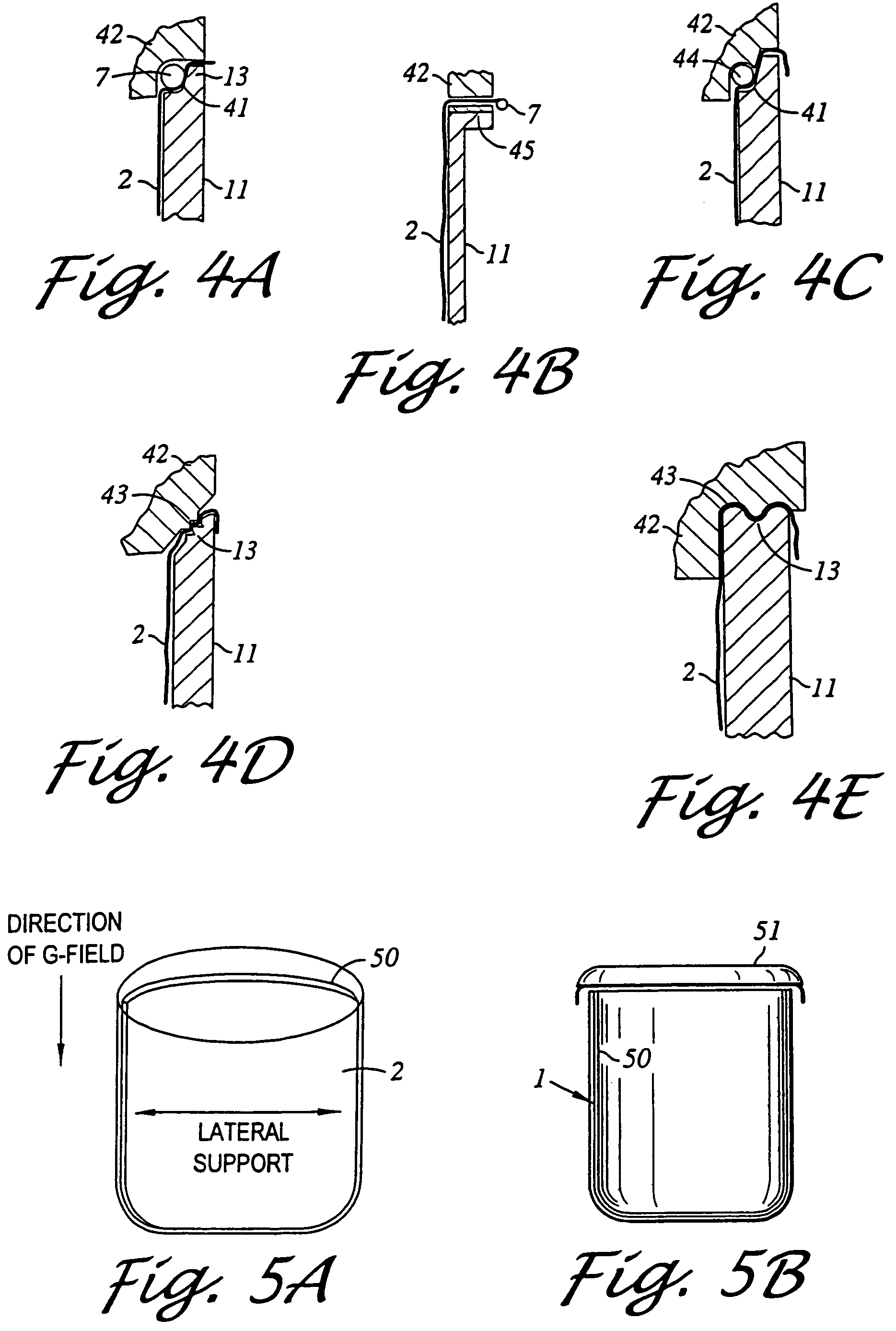Removable conformal liners for centrifuge containers
- Summary
- Abstract
- Description
- Claims
- Application Information
AI Technical Summary
Benefits of technology
Problems solved by technology
Method used
Image
Examples
Embodiment Construction
[0028]Referring to FIGS. 1 and 2A, a removable liner 1 for a centrifuge container embodying the present invention comprises a flexibie or semi-rigid body 2 with an opening 3 for introducing a sample. As shown in FIG. 2A, once the liner of this invention is inserted into a centrifuge container 11, the liner-body conforms to the interior shape of the container.
[0029]For the purpose of this invention, a flexible or a semi-rigid liner body is made of any material that allows a deformation of the liner body without breakage. The semi-rigid liner body of this invention is a freestanding structure that can maintain its 3-D shape outside of the container, both when empty and when filled with a sample. The flexible liner body, on the other hand, cannot support the weight of a sample on its own outside of the container. Both semi-rigid and flexible liner bodies can be made of a wide range of materials, including, but not limited to, paper, carton, polyethylene, polyvinylchloride (PVC), ethyl ...
PUM
| Property | Measurement | Unit |
|---|---|---|
| Strength | aaaaa | aaaaa |
Abstract
Description
Claims
Application Information
 Login to View More
Login to View More - R&D
- Intellectual Property
- Life Sciences
- Materials
- Tech Scout
- Unparalleled Data Quality
- Higher Quality Content
- 60% Fewer Hallucinations
Browse by: Latest US Patents, China's latest patents, Technical Efficacy Thesaurus, Application Domain, Technology Topic, Popular Technical Reports.
© 2025 PatSnap. All rights reserved.Legal|Privacy policy|Modern Slavery Act Transparency Statement|Sitemap|About US| Contact US: help@patsnap.com



